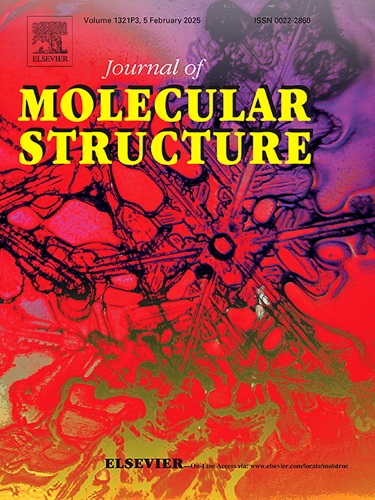提高新型 Al2O3-Citosan@ 活性炭纳米复合材料的室内空气质量:检验空气净化器材料的气相菲吸附效率
IF 4
2区 化学
Q2 CHEMISTRY, PHYSICAL
引用次数: 0
摘要
本文章由计算机程序翻译,如有差异,请以英文原文为准。

Enhancing a novel Al2O3–Chitosan@activated carbon nanocomposite for indoor air quality: Examination of vapor-phase phenanthrene adsorption efficiency of air cleaner material
Herein, we report the chemical activation of Triticum monococcum (einkorn wheat) waste biomass (TRM) with ZnCl2 to obtain a tailored activated carbon (TAC) and modified TAC (MTAC). Chitosan and aluminum oxide nanoparticles (CS–Al2O3@TAC) were incorporated to prepare MTAC. Both TAC and MTAC were exploited for the removal of non-polar phenanthrene (PHE) from the controlled gas steam. The effectiveness of the resulting MTAC was systematically investigated in the gas to solid-phase removal of PHE. Also, the physicochemical properties were evaluated by the Brunauer-Emmett-Teller specific surface area (583 m2g-1 for TAC and 729 m2g-1 for MTAC), Fourier transform infrared spectroscopy, scanning electron microscopy, thermogravimetric analysis, and powder X-ray diffraction. The findings revealed that the MTAC composite is a promising adsorbent for developing cost-effective filters to remove polycyclic aromatic hydrocarbons from indoor environments. The PHE adsorption on MTAC (85 mg g-1) was higher than on TAC (60 mg g-1) during the first 50 min, attributed to the oxygenated functional groups. The adsorption capacity of MTAC increased sharply at concentration of 300 ng m-3 and then slowly increased up to 131 mg g-1 at 500 ng m-3. The adsorption isotherms at different temperatures were determined by thermodynamic parameters such as free energy (ΔG° = −2.59 kJ mol-1 to −5.03 kJ mol-1 for TAC; ΔG° = −5.69 kJ mol-1 to −8.95 kJ mol-1 for MTAC), enthalpy (ΔH° = 30.49 kJ mol-1 for TAC; ΔH° = 36.53 kJ mol-1 for MTAC), entropy (ΔS° = 0.14 kJ mol-1 K for TAC; ΔS° = 0.15 kJ mol-1 K for MTAC) and, overall, PHE adsorption was feasible, spontaneous, and endothermic. This work showed that incorporation of CS–NPs and Al2O3–NPs into TAC brings about better adsorption properties , compared to pristine TAC, which can be attributed to the modification of major functional groups. The desorption efficiency of TAC (73 %) and MTAC (86 %) decreased over five cycles of multiple reuse. Moreover, the adsorption capacity of MTAC remained noticeably higher than that of TAC, suggesting that chemical modification can enhance the removal of gas flow PHE.
求助全文
通过发布文献求助,成功后即可免费获取论文全文。
去求助
来源期刊

Journal of Molecular Structure
化学-物理化学
CiteScore
7.10
自引率
15.80%
发文量
2384
审稿时长
45 days
期刊介绍:
The Journal of Molecular Structure is dedicated to the publication of full-length articles and review papers, providing important new structural information on all types of chemical species including:
• Stable and unstable molecules in all types of environments (vapour, molecular beam, liquid, solution, liquid crystal, solid state, matrix-isolated, surface-absorbed etc.)
• Chemical intermediates
• Molecules in excited states
• Biological molecules
• Polymers.
The methods used may include any combination of spectroscopic and non-spectroscopic techniques, for example:
• Infrared spectroscopy (mid, far, near)
• Raman spectroscopy and non-linear Raman methods (CARS, etc.)
• Electronic absorption spectroscopy
• Optical rotatory dispersion and circular dichroism
• Fluorescence and phosphorescence techniques
• Electron spectroscopies (PES, XPS), EXAFS, etc.
• Microwave spectroscopy
• Electron diffraction
• NMR and ESR spectroscopies
• Mössbauer spectroscopy
• X-ray crystallography
• Charge Density Analyses
• Computational Studies (supplementing experimental methods)
We encourage publications combining theoretical and experimental approaches. The structural insights gained by the studies should be correlated with the properties, activity and/ or reactivity of the molecule under investigation and the relevance of this molecule and its implications should be discussed.
 求助内容:
求助内容: 应助结果提醒方式:
应助结果提醒方式:


